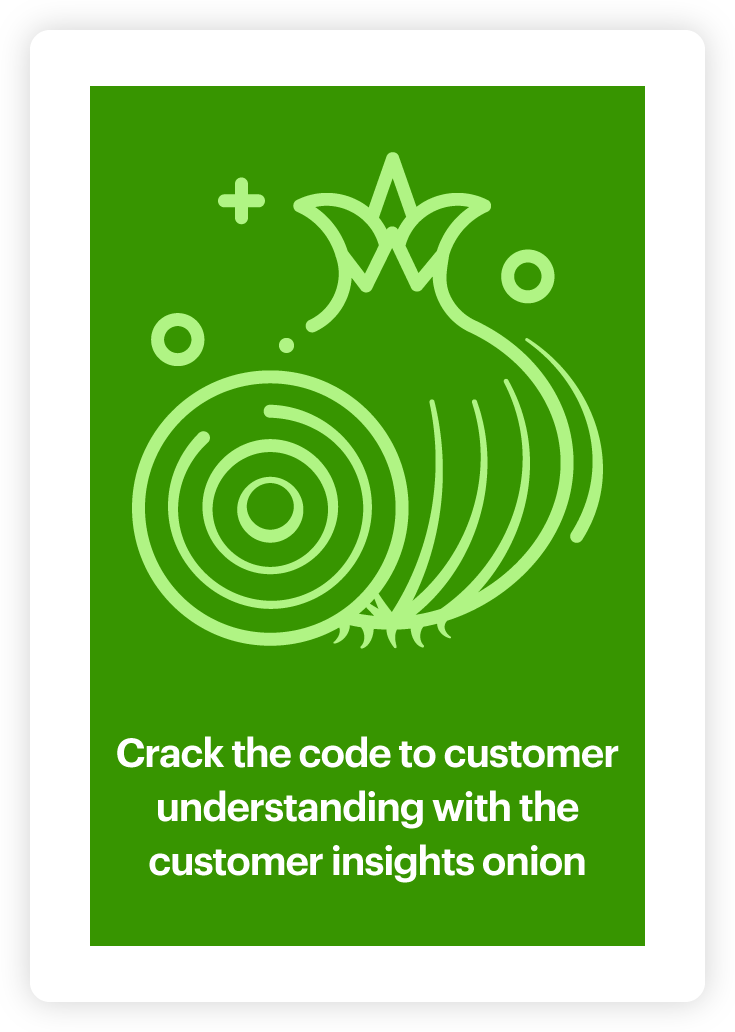What customer satisfaction scores aren’t telling you

Businesses use NPS, CSAT and CES surveys to measure how happy customers are with their products, services or the brand overall. Knowing whether or not customers are satisfied is a good start – but without understanding the reasons behind customer satisfaction scores you won’t be able to pinpoint the drivers of customer (dis)satisfaction nor implement necessary changes to drive improvement.
The path to understanding the reasons behind your satisfaction scores lies in being able to effectively analyze the open-ends that typically come along with them – unfortunately, this is often easier said than done.
But let’s step back for a moment and look at what these customer satisfaction metrics actually mean:
- Net Promoter Score (NPS): An NPS survey uses a scale from 0 to 10 to understand how likely customers are to recommend a brand, product or service. NPS measures promoters (ratings of 9 and 10), detractors (ratings of 6 or lower) and passives (ratings of 7 or 8) to determine overall brand performance.
- Customer Satisfaction Score (CSAT): CSAT scores measure how consumers feel about an experience they have had with your brand and whether you’ve met their expectations. CSAT surveys typically follow a 1 to 5 scale (1 being very dissatisfied and 5 being very satisfied).
- Customer Effort Score (CES): CES surveys serve to gauge the effort required from a customer when dealing with an issue or interacting with your brand or product. These surveys use a scale from 1 to 5 (1 requiring little effort, 5 being very difficult).
What customer satisfaction scores are good for
Generally, customer satisfaction metrics help you get an overall picture of how happy your customers are with your brand, product or service. They enable you to assess overall customer experience, uncover pain points along the customer journey and track changes in customer sentiment over time.
CES scores are particularly useful for software product managers looking to improve their UX. NPS enables you to assess how well your business is doing overall – by measuring NPS before and after a product or service improvement you’re able to pinpoint whether the changes have had the intended effect on customer loyalty. CSAT helps you understand how well your customer-facing teams are able to solve problems, or as an overall indicator of satisfaction and customer loyalty.
What customer satisfaction scores keep secret
While customer satisfaction metrics are a great way to gain a top-level understanding of your customer experience, raw NPS, CSAT and CES scores by themselves fail to tell you why your customers feel the way they do.
For instance, the reason customers rate customer service interactions poorly might not have anything to do with the agents themselves, but rather with the fact that the business doesn’t provide the desired shipping options. Without an open-ended question eliciting the reason for a customer rating (and the right tools to analyze these open-ends), you might never uncover the root cause of a negative or positive rating.
Blending customer satisfaction scores with qualitative feedback
As you’ve seen, customer satisfaction metrics alone won’t provide the rich customer feedback data necessary to generate powerful customer insights and improve CX. Combining closed rating scale questions with open-ends will deliver the information needed to uncover the reasons behind customers’ NPS, CSAT and CES ratings. So ensure that your customer satisfaction surveys include a corresponding open-end that gives you this next level of insight.
This type of powerful question pairing might take the following shape:
On a scale from 0 to 10, how likely are you to recommend [brand, product, service…] to a [friend, colleague, family member…]?
In a few sentences explain the reasons for your rating.
Analyzing open-ends like these manually quickly becomes unscalable, which is why many businesses fail to give them the attention they deserve. With the right customer insights tool, however, you’re able to automate the most cumbersome parts of the analysis process and quickly make sense of this rich qualitative customer satisfaction survey data.
Let your customer satisfaction surveys tell you everything you need to know
Now you know: the key to gathering rich customer feedback data to generate powerful insights is blending customer satisfaction scores with qualitative feedback. Want to see what powerful customer satisfaction survey analysis looks like in the real world? Check out three common text analytics use cases for improving customer experience.
Ready to efficiently generate powerful customer insights from your customer satisfaction surveys? Explore our introductory guide to customer insights tools or book a no-commitment discovery call with one of our experts!
